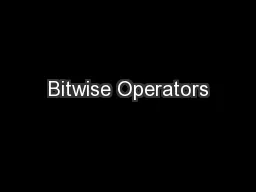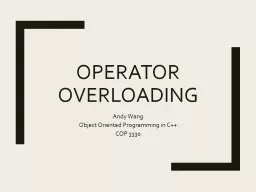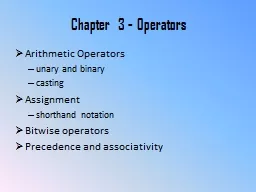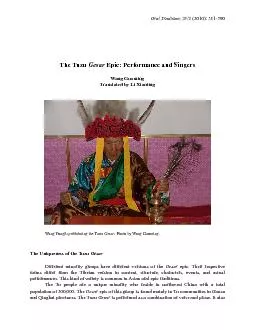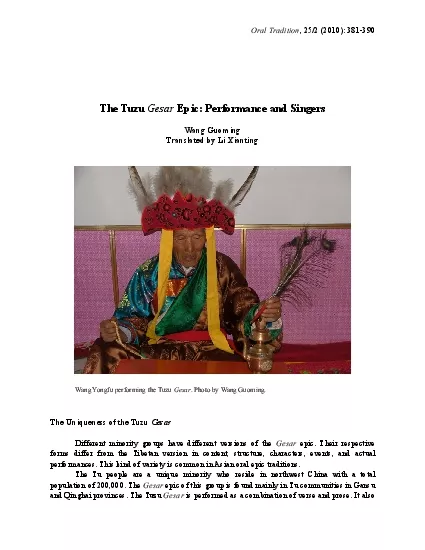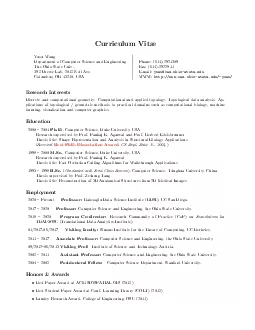PPT-Bitwise Operators Andy Wang
Author : lois-ondreau | Published Date : 2019-06-22
Object Oriented Programming in C COP 3330 Bits and Bytes A bit is the smallest unit of storage in a computer It store 0 or 1 A byte consists of 8 bits Smallest
Presentation Embed Code
Download Presentation
Download Presentation The PPT/PDF document "Bitwise Operators Andy Wang" is the property of its rightful owner. Permission is granted to download and print the materials on this website for personal, non-commercial use only, and to display it on your personal computer provided you do not modify the materials and that you retain all copyright notices contained in the materials. By downloading content from our website, you accept the terms of this agreement.
Bitwise Operators Andy Wang: Transcript
Download Rules Of Document
"Bitwise Operators Andy Wang"The content belongs to its owner. You may download and print it for personal use, without modification, and keep all copyright notices. By downloading, you agree to these terms.
Related Documents



